In 2021, Chris MacLean explained to us the visual effects work for the first season of Foundation. He’s back today to talk to us about his work on the second season and his new challenges.
How was this new collaboration with the showrunners and the directors?
On Season Two (S2) of Foundation we had a lot of the same players as Season One (S1). Mike Enriquez was back as our Post VFX Supervisor, as were directors, like David S. Goyer (who is also our Creator and Showrunner), Alex Graves and Roxann Dawson. New to the directorial team was Mark Tonderai. Our creative team stayed very much the same between seasons, so it felt like a continuation of season one. The biggest difference is that the creative confidence had grown, and we had a better idea of where the story was headed. We had established our visuals language and knew where we wanted to take the audience next. The first three months of prep were David, Rory, Roma, Alex, and Laurie Borg (our Line Producer) and I driving around Ireland, the Canaries and scouting Prague while we looked for our new locations. It was this great sense of dysfunctionally functioning sci-fi family touring around on some of the most beautifully desolate places on Earth imagining we were on other planets.
What are the main changes from the first season?
The biggest change was the scope of VFX work felt insurmountable at times. We had a bigger, ringed Trantor, we went inside the Prime Radiant, we had to escape from Synnax with Gaal and Salvor, we had Beki, our domesticated Bishop’s Claw, we had the Stone Eaters, we had the Spacers, we had Helicon and the Moonshrikes, the space battle… along with a few things I won’t spoil here but you get the idea. In Season One, we still had large tentpole sequences like the tether fall and the Invictus but when I look at S1 and S2 objectively: S1 was a VFX appetizer to the main course that became S2.
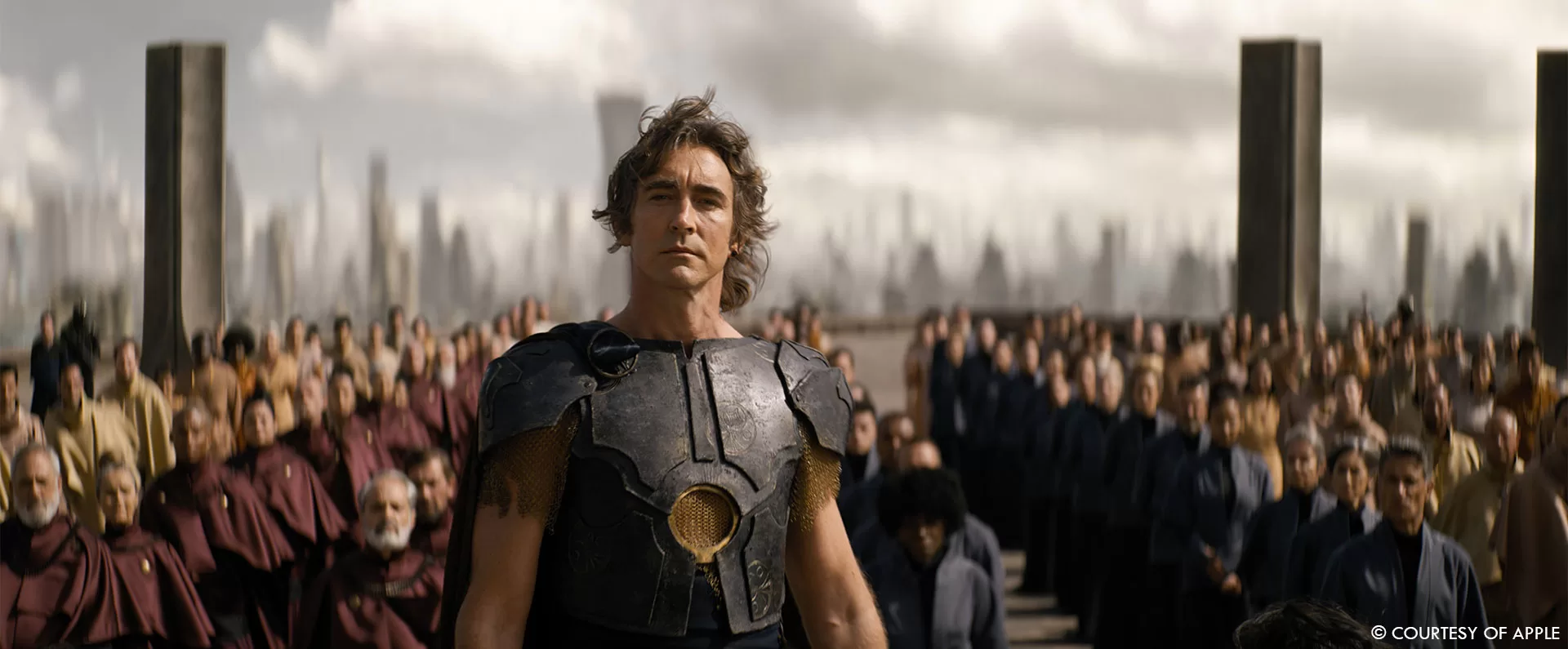
How did you organize the work your VFX Producer?
New to the VFX team for S2 was Roma Van Den Bergh as our VFX producer. She was a great addition to the team and brought very positive, upbeat energy to the team. She and I spent a lot of time looking at the locations, sets and going through our breakdowns. We prevised A LOT on S2 with Michelle and the team at Framestore, so a lot of our early work was parsing storyboards and getting the sequences back in time for the directors to work. Then, during the shoot, we spent some time casting our vendors and vendor teams in order to make sure the sequences were going to the group of artists. They are all super talented, but all have their strengths and niches. I second unit directed on S2 as well, so there was some logistical work to make sure that we were covered in terms of our on-set teams, along with making sure I had time to prep.
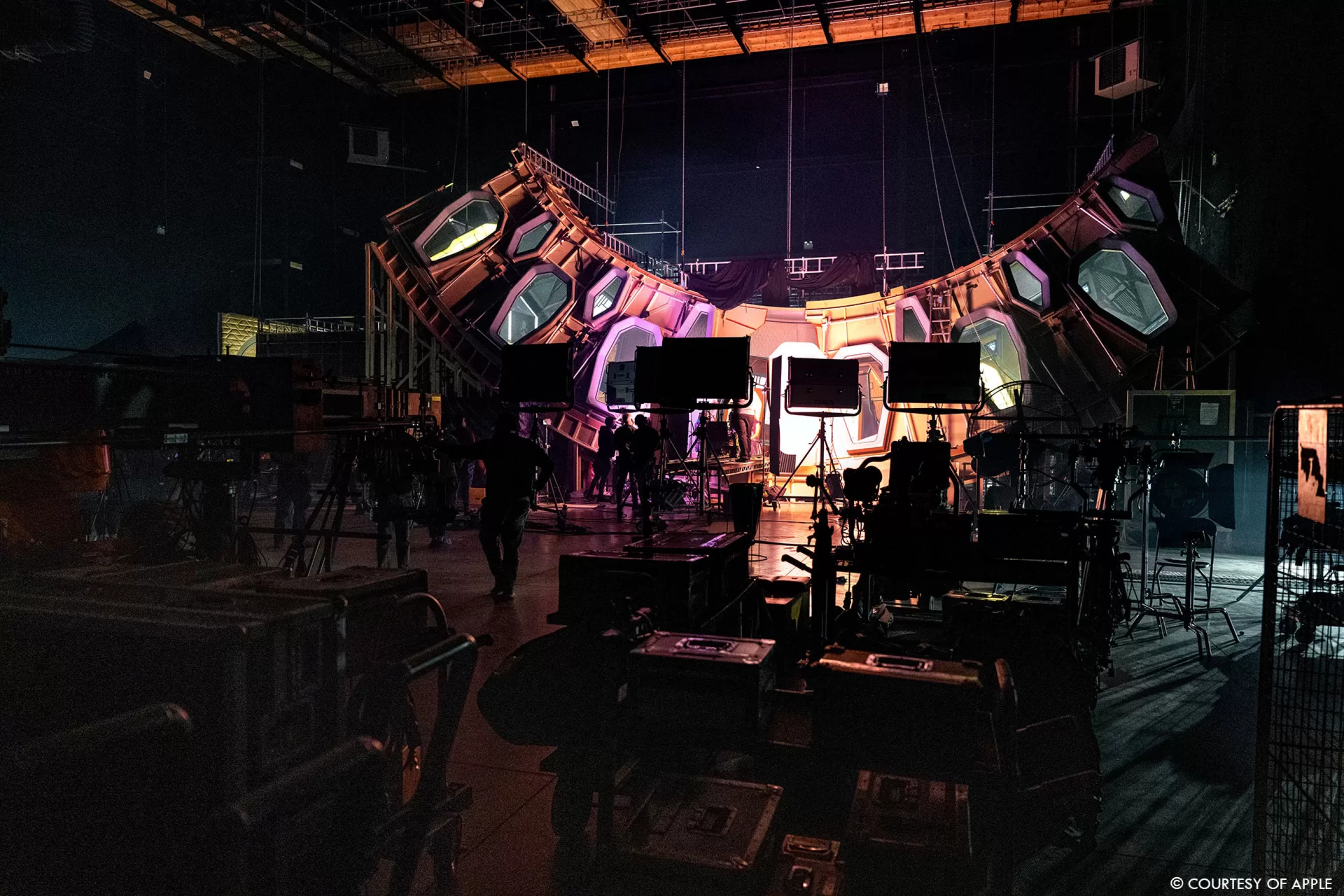
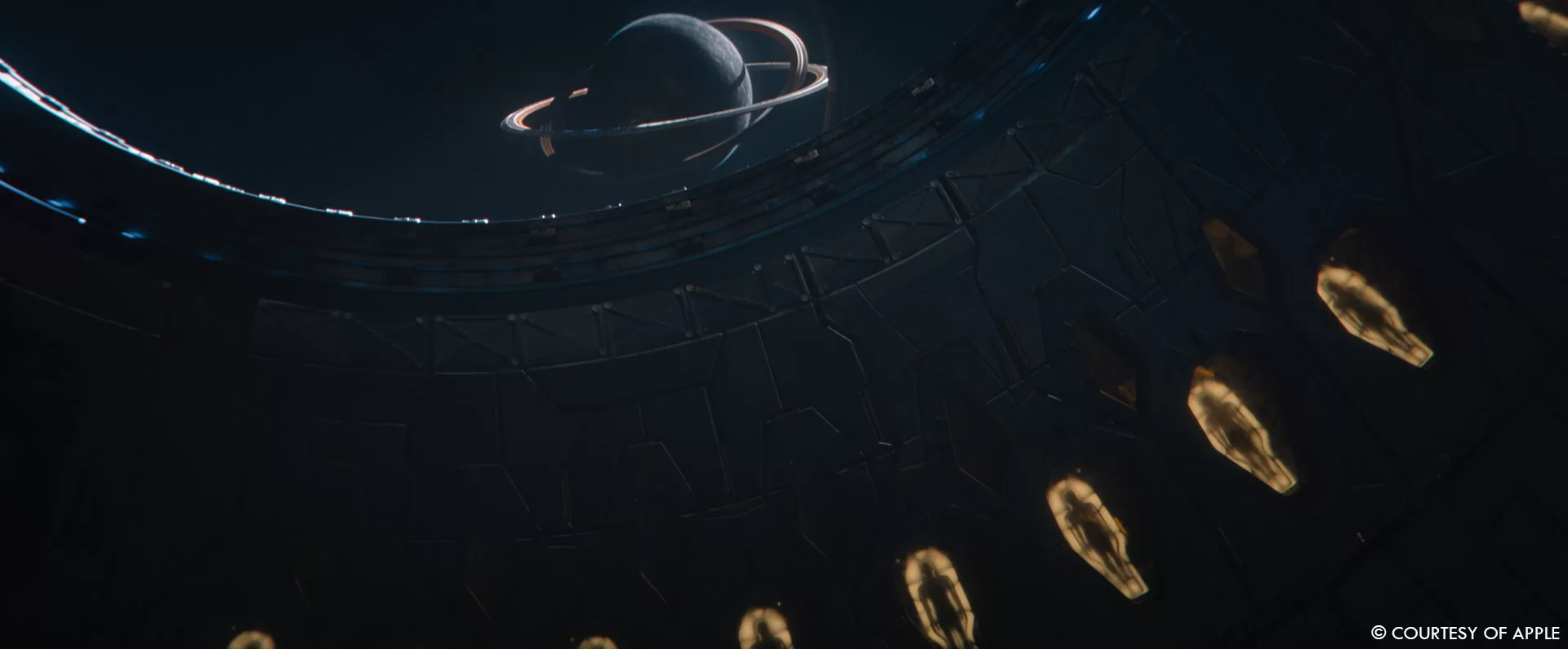
What was the main challenges with this new season?
One of the main challenges was not getting complacent. We didn’t want to hit the same level of visual juiciness we had hit on S1, we wanted to surpass it. Knowing how good of a team we had built, with Mike and Roma, along with our production team (both in LA and on-set) and our top-notch vendor teams, I knew we had a chance to succeed but it’s never guaranteed. Fortunately, I think we all felt the same way, we just continued to push the work and push ourselves.
In terms of the work, I think the Prime Radiant interior and integrating Jared’s performance into what was essentially a bunch of plexiglass sets and black stairs was extremely difficult, from conception to delivery. Trey Harrell, our production on-set supervisor spent quite a bit of time with the camera operator, Rob Flood, and Jared Harris working out how this was all going to work. Alex Graves had an idea of what he wanted for this, but it really did take the whole group to figure out the four-dimensional space and how we were going to traverse it.
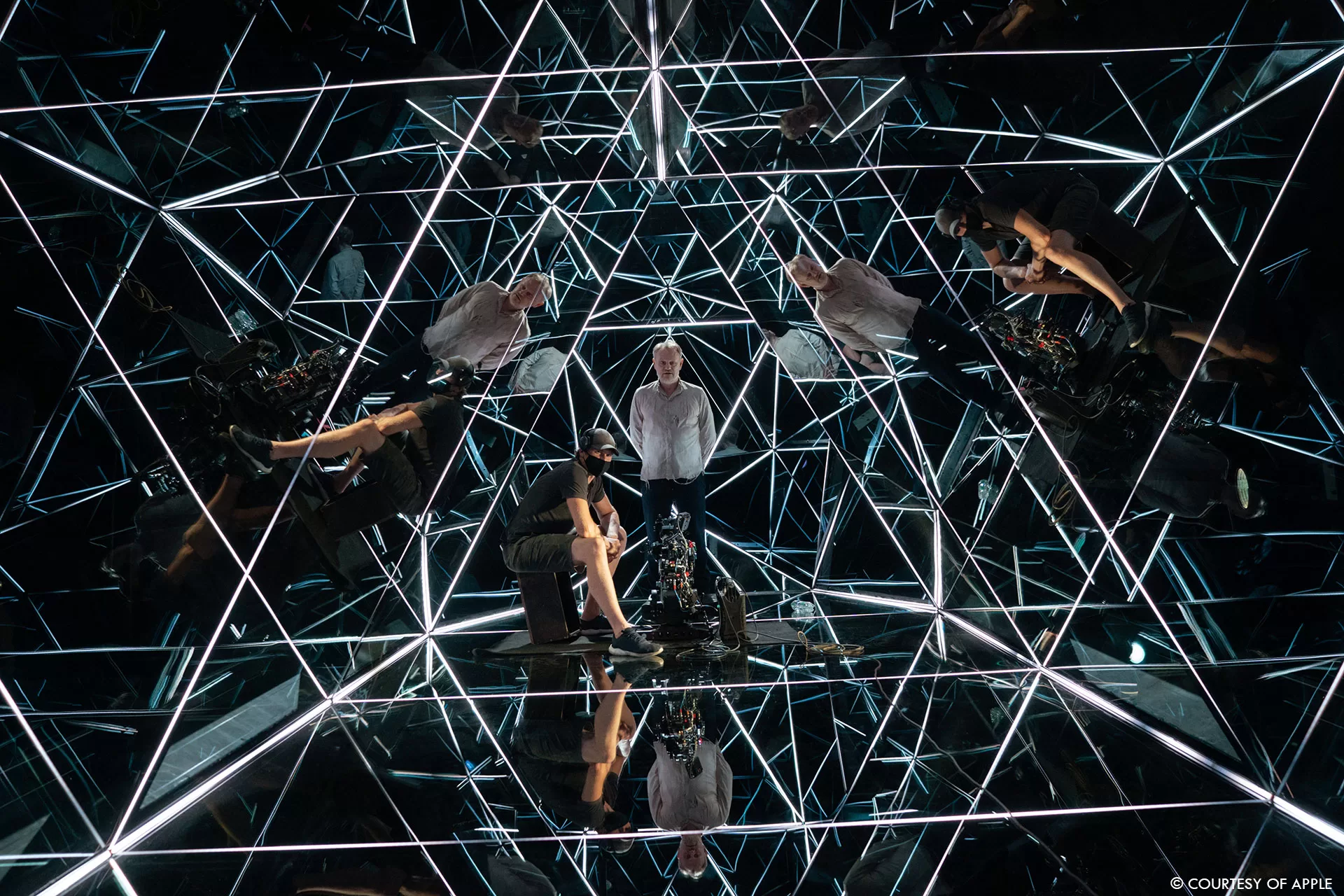
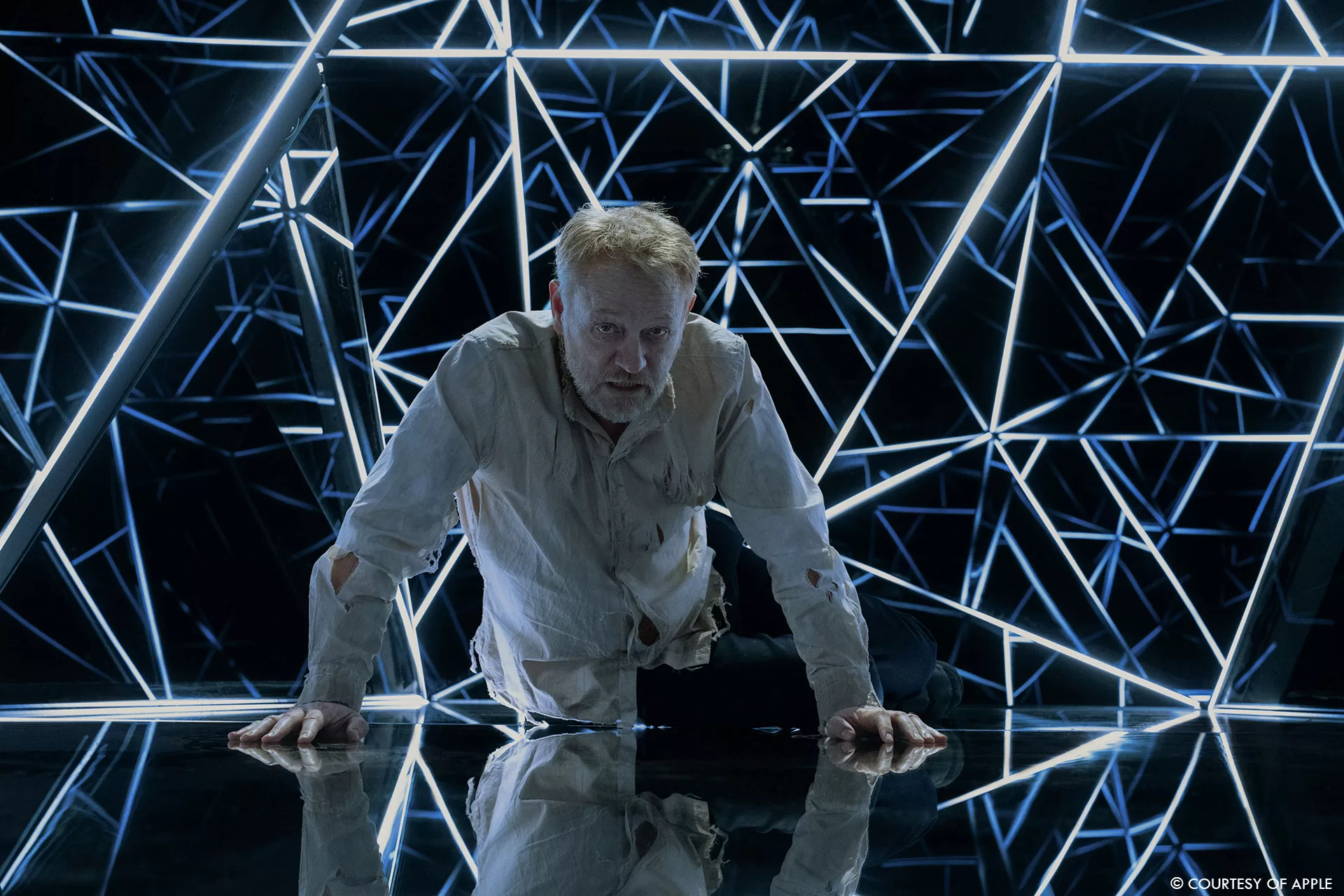
Can you elaborate about the design and the creation of the creatures?
Creatures did feature large in S2 but not in the way you think. We only had two main digital creatures this year, Beki the Bishop’s Claw and the Moonshrikes. The Bishop’s Claw was designed by Amro Attia and was sculpted originally by Lorena E’Vers. This model was handed off for S2 to Laureline and the team at Framestore who added the saddle and reigns. For the Moonshrikes, Rory and I kicked a couple sketches back and forth, then Jonathan Opgenhaffen from Framestore did some concept sculpts. The Framestore team really did a great job with all this extremely difficult work.
I wouldn’t call the Spacers creatures, but Christian and the team at Image Engine did a PHENOMENAL job creating these hybrid CG/performer characters. They were probably one of the more difficult design challenges we had as we had to completely replace their bodies with CG.
We did have a lot of earthbound creatures as well, but in true Foundation fashion, anytime we did these they were real. An example of this is on Siwenna, where we had Earth creatures, like camels and lizards, that had been seeded by Empire.
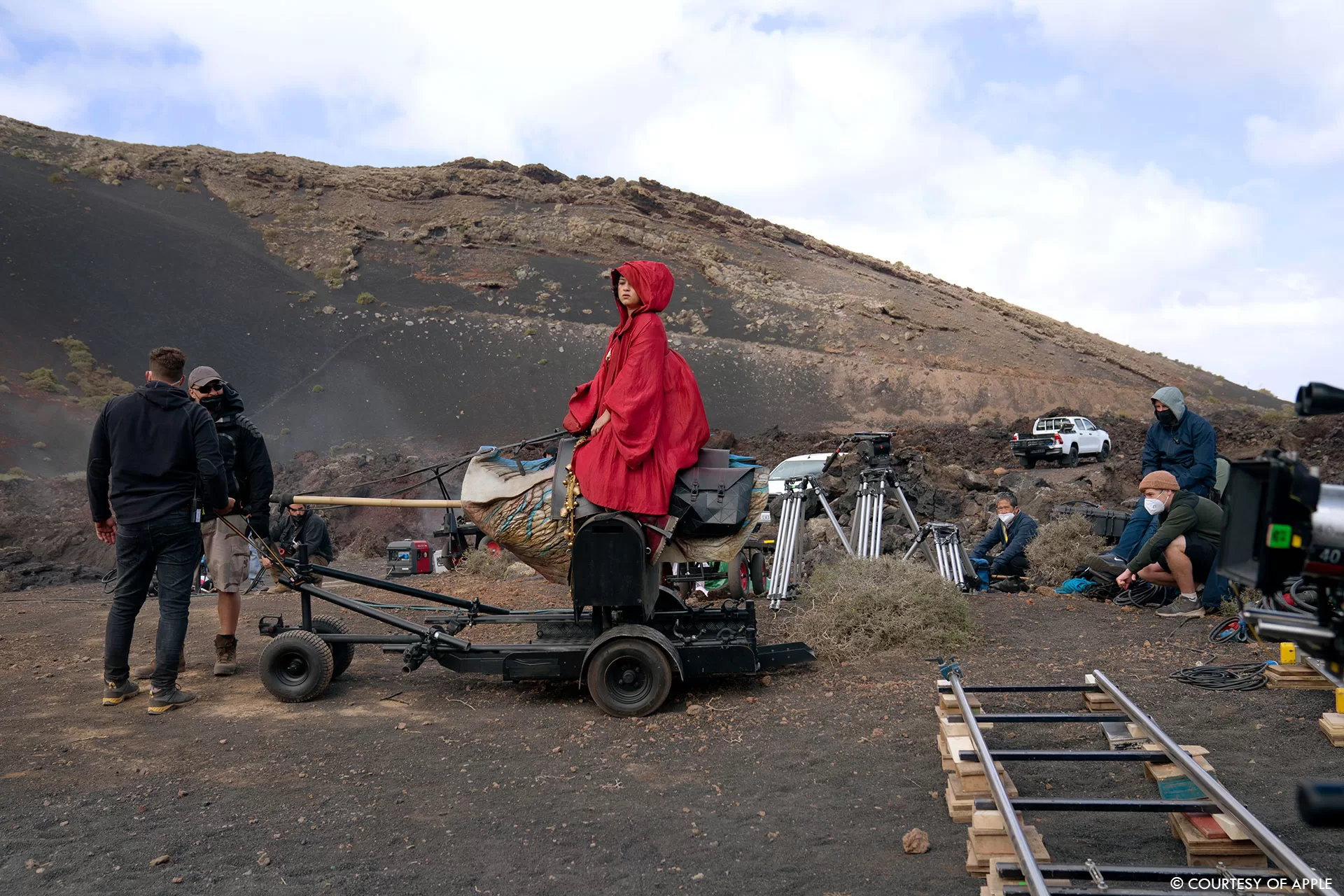
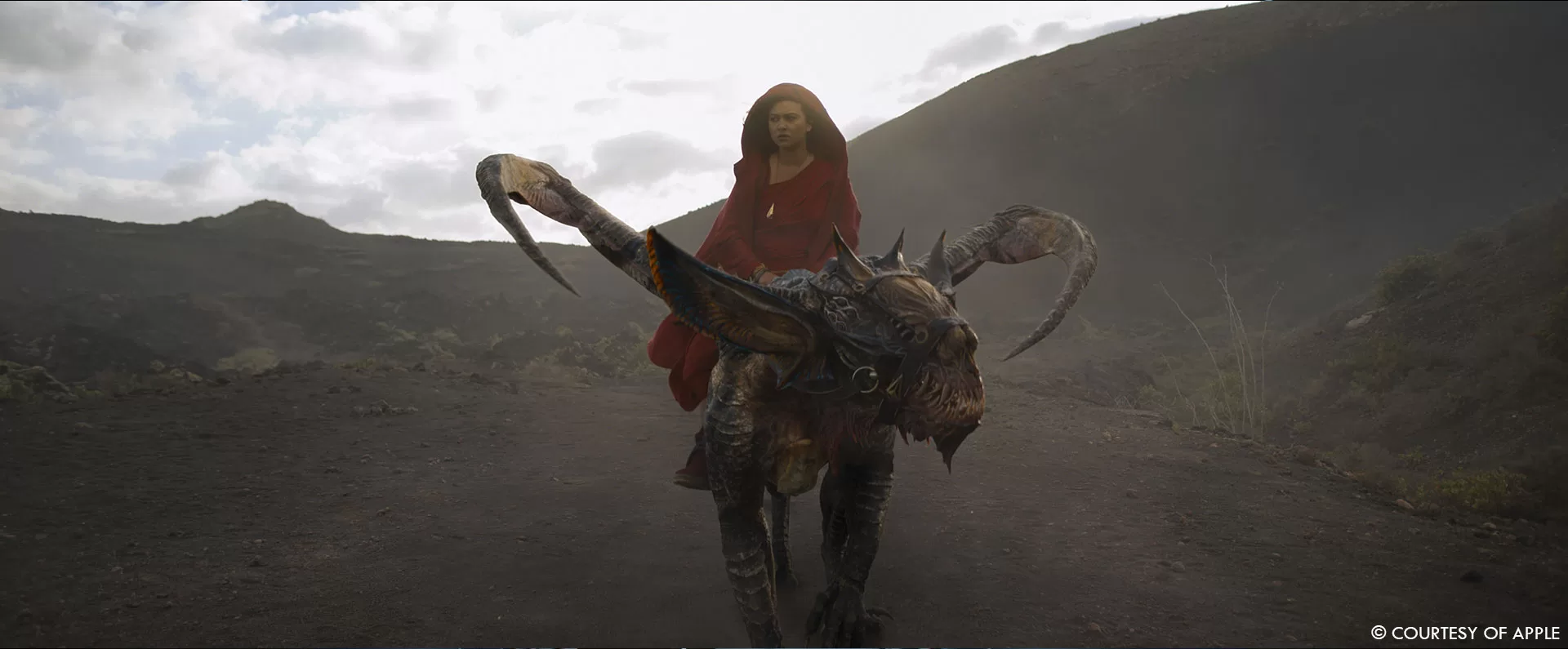
Can you tell us more about their animation especially when they are a group of them?
In their design the Moonshrikes had these switchblade front legs that were also the wings. They ran on their “wrist” knuckle and when they hit the cliff, they had to spread their wings to fly to the moon, or fall to their death. It was a combination of Head Smashed In Buffalo Jump and birds learning to fly for the first time.
Laureline Silan at Framestore and the animation supervisor, Laurent Laban, along with their animation, FX and crowd teams did a wonderful job with the Moonshrikes. They created a very believable run cycles, that they then augmented with offsets and bespoke reactions or vignettes of animation.
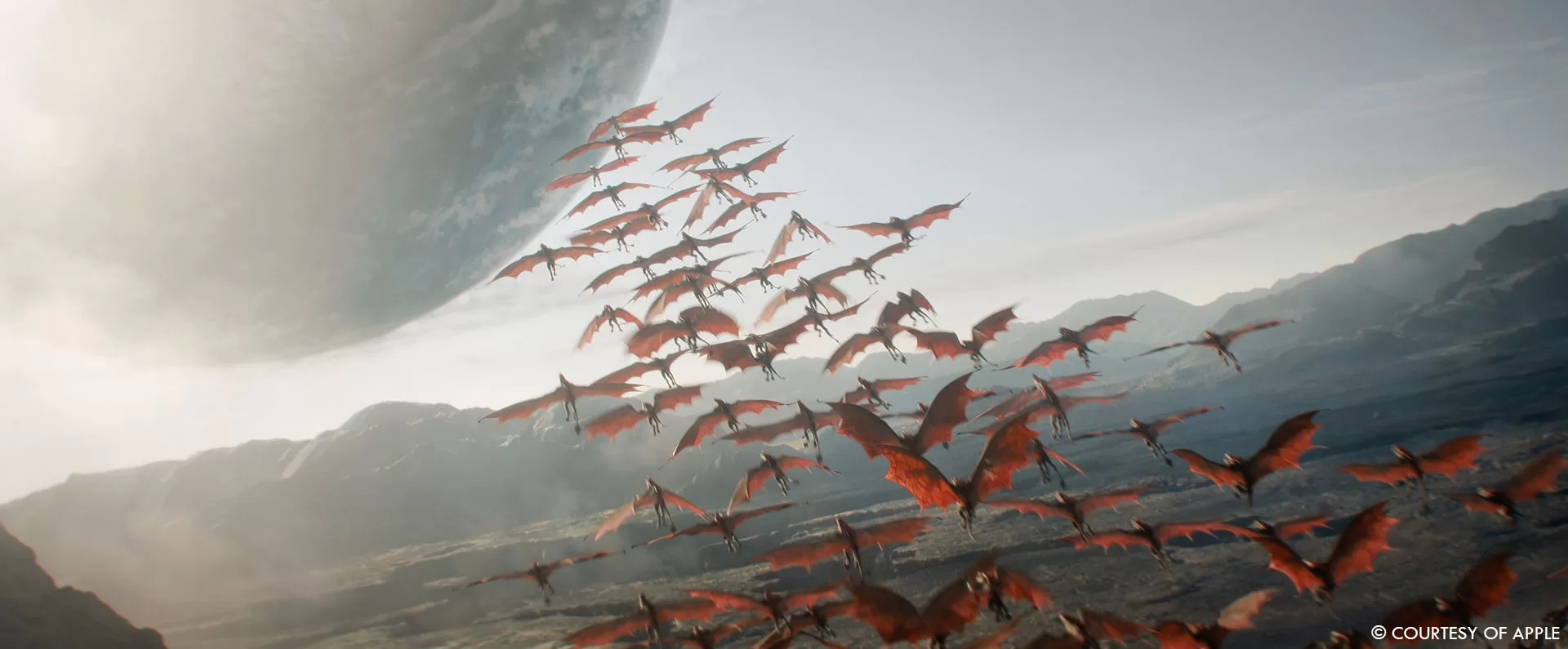
Can you elaborate about the various environments?
//Original Environments
Terminus, 140 years later: We are now in the religious phase of Foundation. There are a few more small settlements, but the majority of the Foundation still resides in the original city. They expanded the city with new tech from the alliance in the Outer Reach. They have also retrofitted the Invictus as a docking bay and space station.
Stephan Schäfholz and Accenture Song (Mackevision) took care of our city work for S2 and did a wonderful job. The Framestore team, Arnaud Brisebois and the team at Rodeo FX shared the space battle and Invictus work.
Trantor, 140 years later: After the fall of the Starbridge, technology stagnated in the Empire. As the Foundation flourished in the outer reach The Cleons built huge rings but had to use the same tech as the Starbridge. If you look closely at the rings, they are made of the same components as the Starbridge. As an increased security measure, the rings are designed to orbit the planet, rather than be tethered to it. Visitors to Trantor are shuttled to the surface, so if there is an attack, it is isolated to the transport ship and will burn up as it enters Trantor’s atmosphere. All of the Trantor work was done with Arnaud and his team at Rodeo, including the Dominion ship arrival which is a very beautiful sequence.
Synnax, where we left Gaal and Lou at the end of S1: The whole planet of Synnax had been consumed with water and a storm was approaching. The teams at Outpost VFX and Chicken Bone FX did a lot of the water extension work. For the escape from Synnax, ILP did our Beggar’s lament, Storm and wave work.
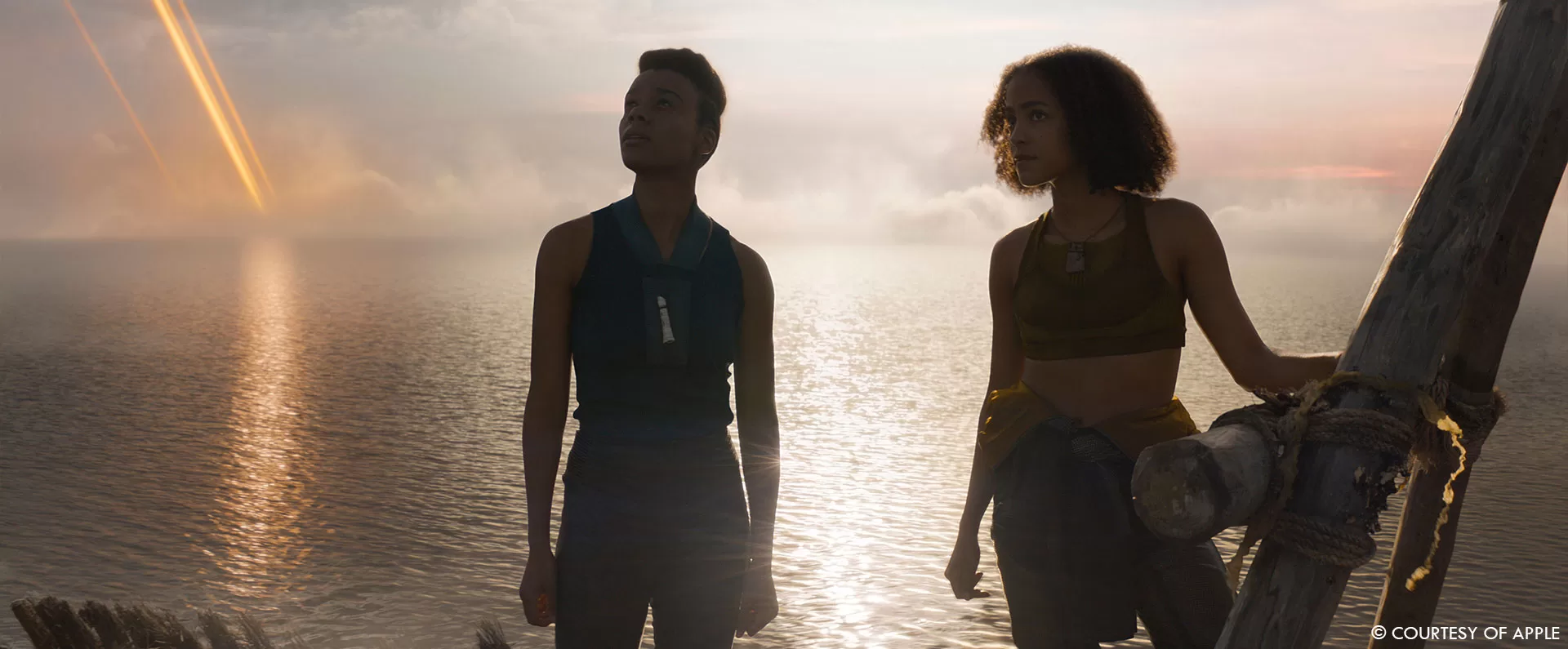
//Our New Environments
The Vault: This environment was almost entirely CG or an extension of a very small set and moving lights. We worked very hard with Arnaud and his team to find the right balance between all of the elements that had been shot and the physical shapes that we wanted in the space. We tried very hard to mimic the Prime Radiant’s exterior without giving away that’s where we were. I think the most difficult part of these scenes was that they were very subjective in the way the were shot and needed a lot of reverse engineering from the visual effects teams to make them work.
Siwenna: The planet is in the Outer Reach and is very primitive in terms of its human settlement. It was of early interest to the Empire but as they grew, the Empire grew less concerned with planets, and people, this distance from Trantor. As it was an early seed planet, many of Earth’s flora and fauna were brought and bred here. The people who live here mainly grow cactus for “medicinal use” and worship a lightning god. This is where we meet Poly and brother Constant, where they are trying to teach the Siwennians about the Church of Hari Seldon. Trixter did Poly’s magic work here.
Oona’s World: This is a desert planet like Mars which was mined and abandoned by Empire. They left their mining machines, which had been weaponized by the last bastions of humanity to fight for the left-over scraps and have been programmed to destroy any organic matter. Here we find the Monuments to Industry, where Kalle gives Hari his new body. Of course, the Stone Eaters detect Gaal, Lou and Hari which means they must escape before being killed. This was another sequence and environment executed by Framestore.
Ignis: Is where we met the Mentallics and Tellum. It’s a goldilock’s planet with similar vegetation and atmosphere to Earth, save for the negative ionic mesosphere, which acts as the ultimate protection for the planet. This causes any electronics to short as they enter the planet’s atmosphere, which is why Beggar’s crash lands. ILP did the crash and the majority of the work for Ignis.
Korell: This is where we meet Commdor Argo and his brigade of all female guards. Argo is the sole ruler of the planet and has tried to mimic Trantor’s architecture, while mixing in some of his own styling. This is also where we meet Hober Mallow and learn about the Castling device, which is a form of teleporter which allows two people to swap physical locations.
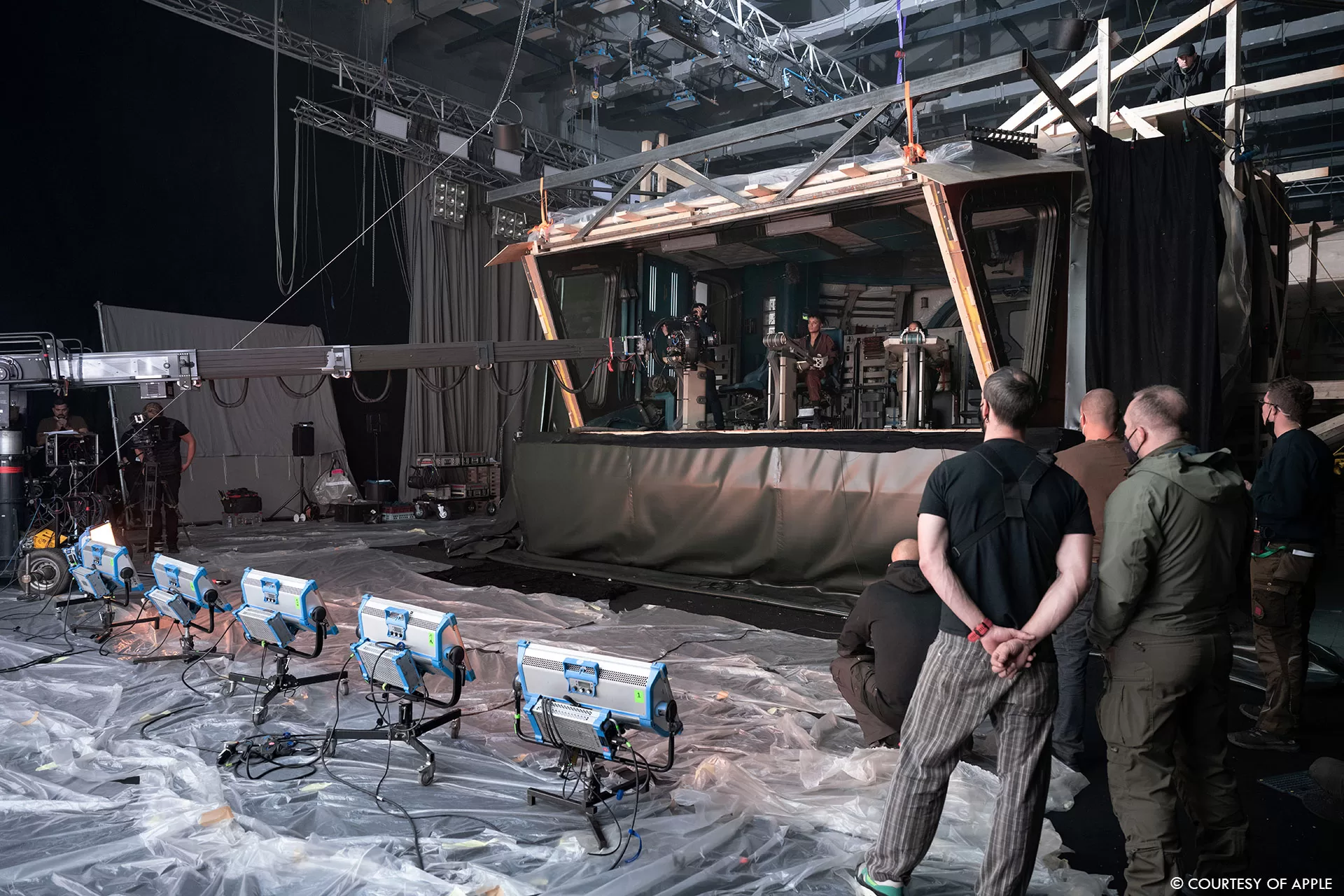
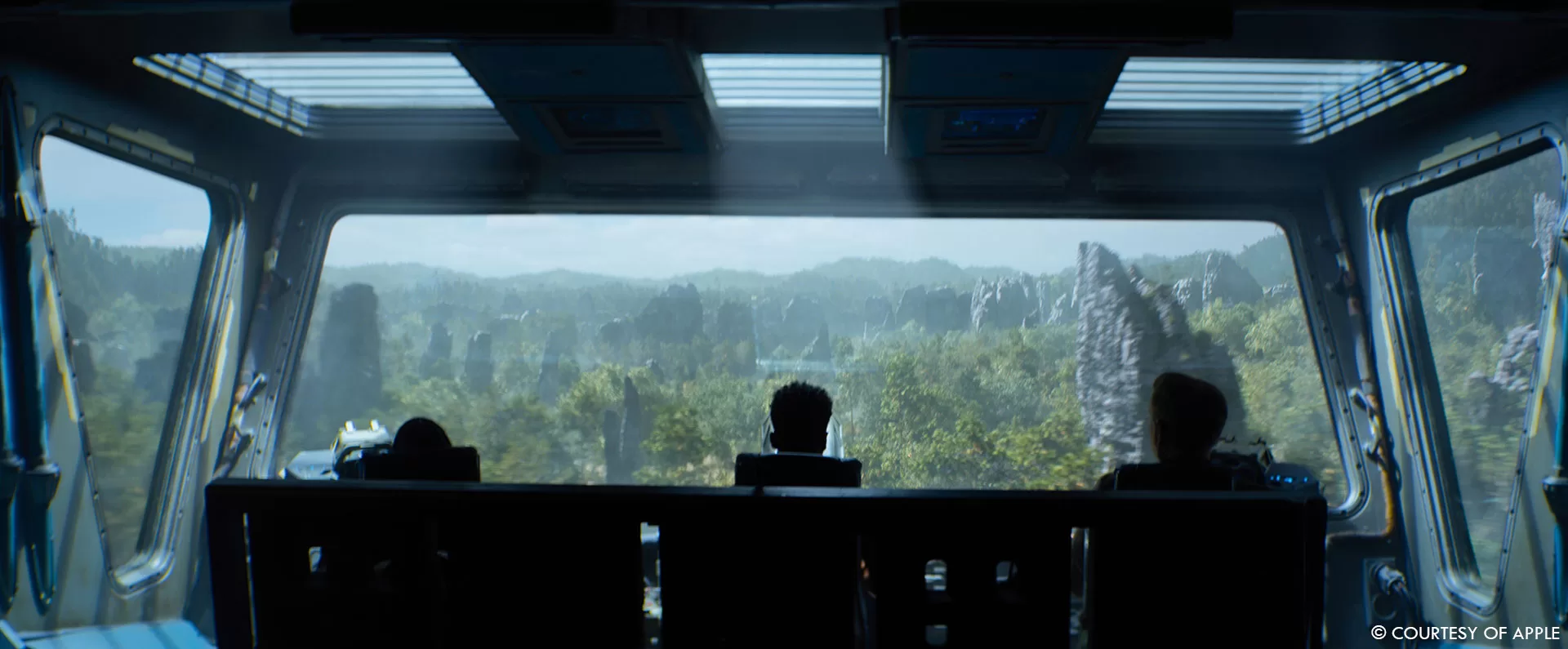
Which one was the most complicated to create?
They all had their challenges, but I would have to say the Vault just in terms of creating an environment from nothing.
What was your approach with the robotic giant spiders?
This was the Framestore team. Again, Rory and I kicked some sketches back and forth and Jonathan did some concept sculpts. We knew that we had to create rules for how the worked and wanted to make them feel huge, so we had to give them a ton of small details. We decided that they were boring machines with legs. We added the lasers in case they hit ore that was too dense for their teeth. Then we did a bunch of motion studies to see how fast or slow they needed to move to make them feel as massive as we needed them to. We also wanted them to seem formidable, so we didn’t want them to move too slowly. I think the FX team really helped with this here by adding extra details to the hard body and dust simulations of the ground breaking up from the machines tearing through its surface. Once we saw the shot of the leg dropping into frame and the dust getting kicked up we knew we’d found our happy medium. The surfacing was meant to echo how we handle our heavy-duty machinery, we went with a yellow for the paint and safety decaling that was human sized. I don’t think we ever say it or focused on it but it was all there.
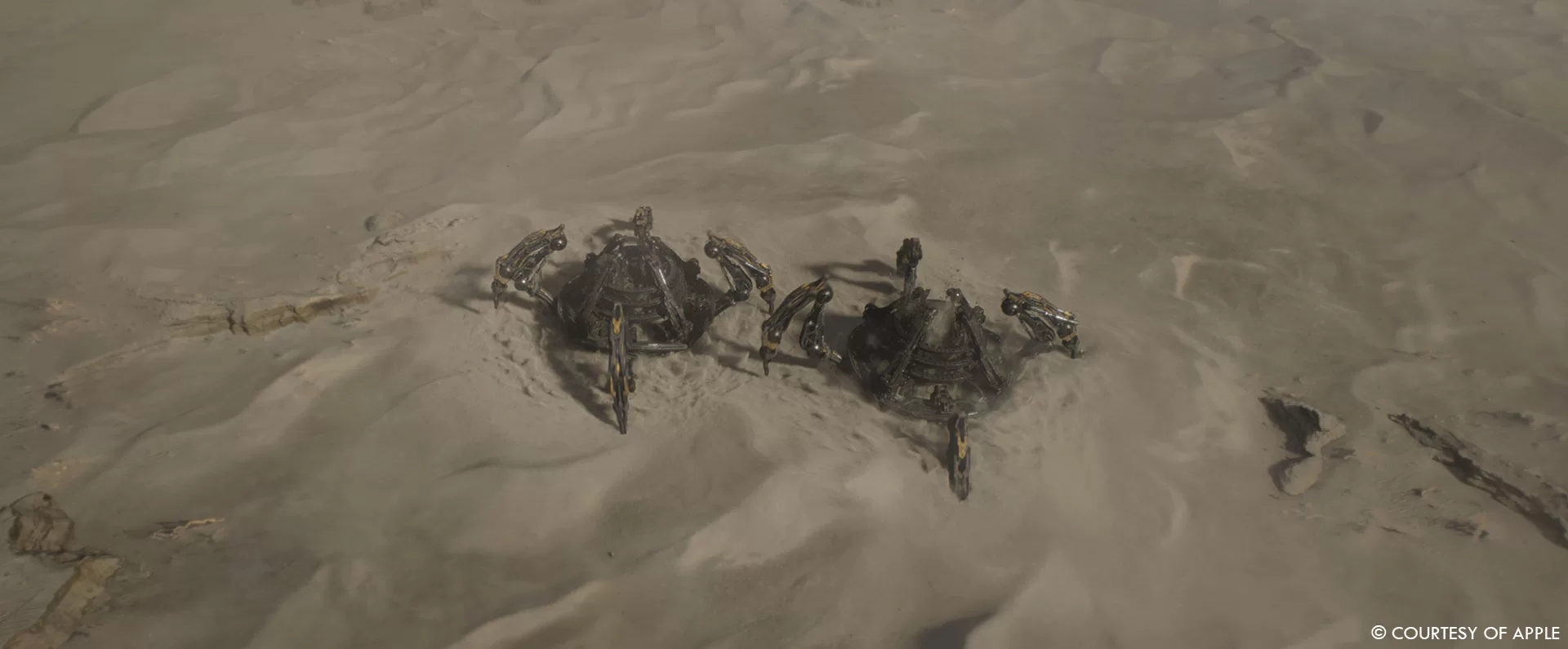
How did you manage the animations challenges with these robots?
Laurent and the animation team are great. We went through a lot of iterations. We talked a lot about the secondary and tertiary movements of all of the hoses, pistons and joints. I think the riggers deserve a huge shout out here. Makings something with this much detail move in a believable way is definitely one of the most difficult challenges in CG.
Did you use LED technology for the background elements inside a ship?
We used LED technology much less on S2 than S1. We relied on traditional lighting methods for 99% of our work this season. We helped the DP’s and gaffers with ideas on how to program their lights.
Can you elaborate about your work on Demerzel?
In S2 we learn a lot more about Demerzel and how she became part of Empire. Our work this season was mainly to help with her origin story. Cleon the First finds her imprisoned and she has been sliced apart and encased in glass to keep her immobile. To accomplish this, art department built the glass stand and the MRI style slices of Demerzel. Prosthetics built the front and back slice of Demerzel’s skin. When Laura needed to speak we took out the front slice and put here in it’s place. We painted her body black along the slice line where she was meant to be a shell. We then shot clean plates for her coverage so we could paint out what was supposed to be negative space. We added some CG edges and internals in a few of the shots. When she is released from her prison, this was all done in CG with a clean plate and the glass removed. For the final shot of her coming together we added a CG healing effect and dropped her hair with monofilament. As always we try to mix practical with our effects to keep everything grounded in reality. Outpost did all of the work here. They have really become the Demerzel vendor and every time we throw something at them like this they come through in spades.
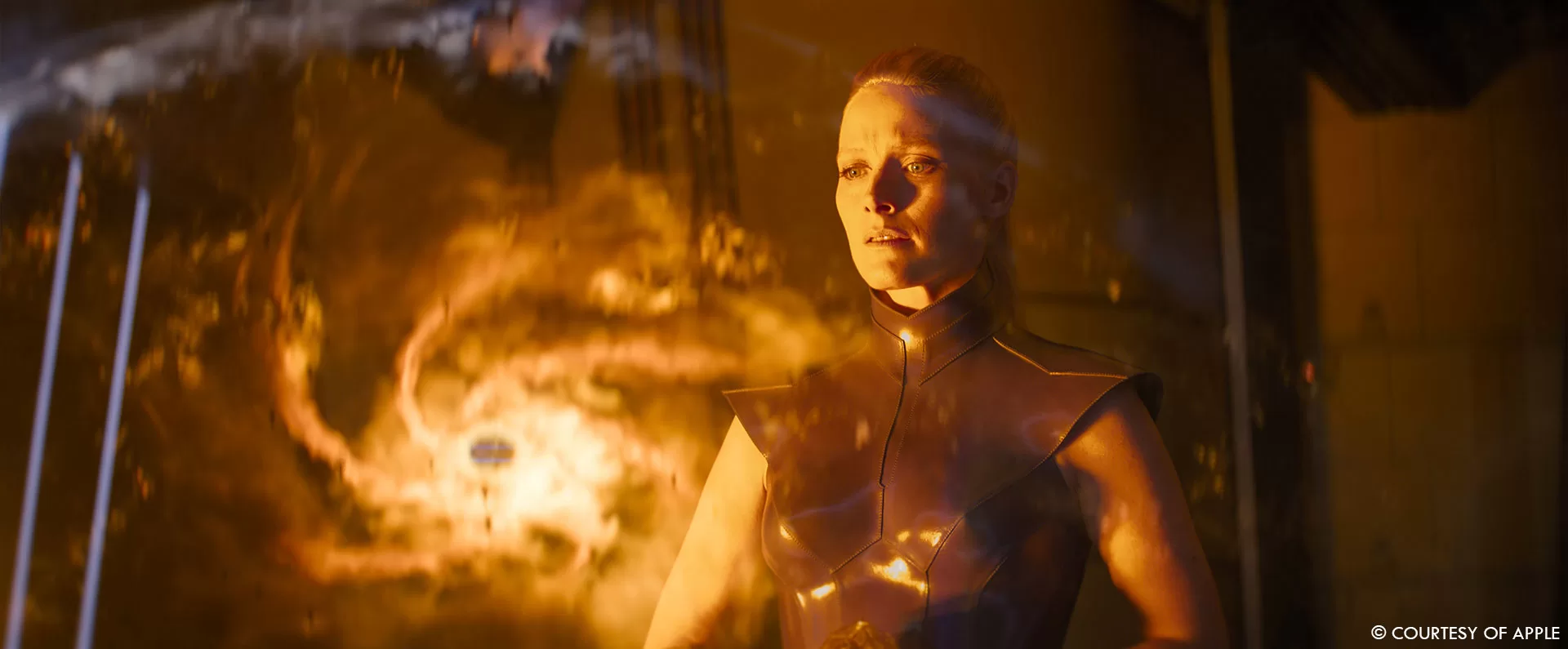
There is a lot of motion graphics. Can you tell us more about their design and animations?
Most of the Prime Radiant and Sandogram work this year was handled by VHQ. The biggest change we had to make this year was that the Prime Radiant had to become an interface to serve the story. In S1, we kept it all very abstract, because Hari and Gaal were the only ones who could read it. For S2, Gaal had to be able to show Salvor what the crisis nodes were and what it meant now that the timeline had shifted. I think we came up with a decent way to show this, but if there were one effect I would go back to this season, both in terms of how we shot it and how we did the visual effects it would be the internals of this display and the communication sandograms. Our on set capture wasn’t that great, and we ended up having to rebuild a lot of the conversations with rotomation and projections, then run the simulations.
How did you help the actors on set with these motion graphics elements?
We had a Hoberman Sphere we would hang for the actors when setting the eyeline’s for the Prime Radiant. In cases where they were having conversations with other actors, we would set this with a painter’s pole or tennis ball. Something interesting we learned about this was that during direct conversations it always played better when the Sandogram actor’s eyeline was set to the space the “real” actor was in. Otherwise, their performances seemed disconnected. It was ok with messages, like Dorwin’s footage.
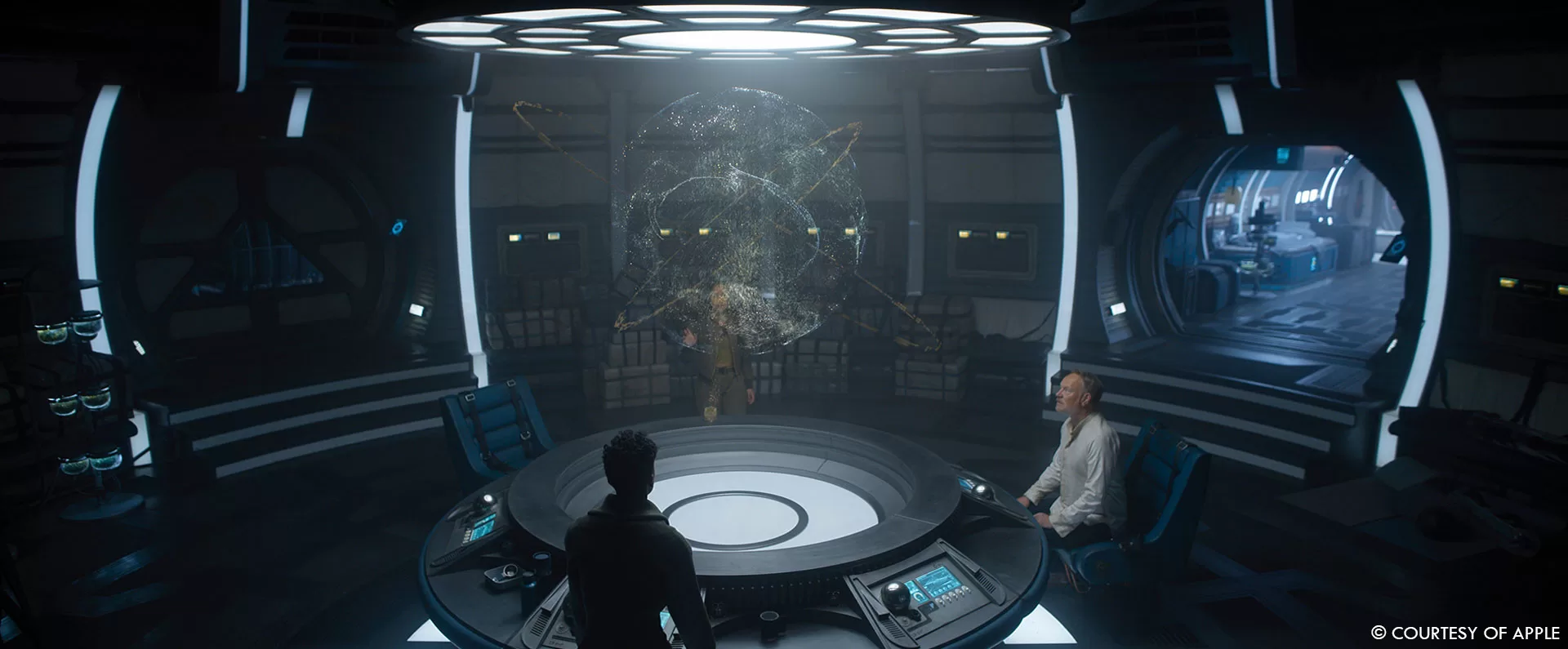
Which sequence or shot was the most challenging?
There are so many this season, but I would have to say that the space battle was extremely difficult. There was a lot of planning that happened in post to make everything work. Originally, there was supposed to be a whole storyline where the Destiny fighters are being decimated by the Whisper Ships being able to short jump. Glawen then realizes that without the navigation wetware that the Foundation Whisper Ships will lose their advantage. We had worked it all out with our original editor, then he had to leave for another show. The new editor came on and was great but cut everything down and a lot of the story was lost. We ended up having to re-work a lot of the sequence to make it fit the new cut. Luckily, we had just enough time to work it out. I’m actually pretty proud of the final sequence.
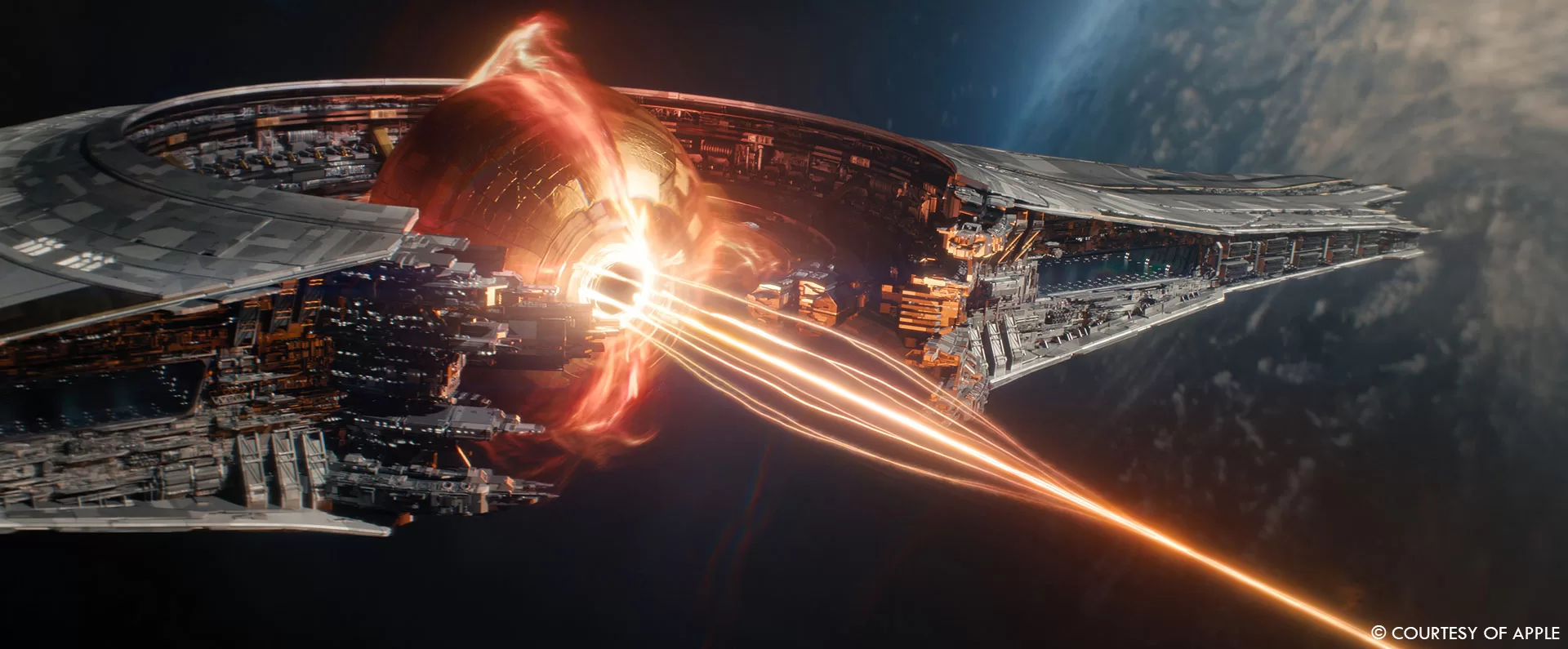
What is your favourite shot or sequence?
I don’t like to pick favourites, but I really like the intro to Beki and Constant. I have a soft spot for the escape from Synnax in episode two because I directed second unit on that.
What is your best memory on this show?
As always, it’s the people. From the actors, directors, HODs and producers to my teams both on the ground and in post, I couldn’t think of a better way to spend my time than to be with these folks creating art. They all really love the show, and hey, who doesn’t want to make crazy, exciting sci-fi!
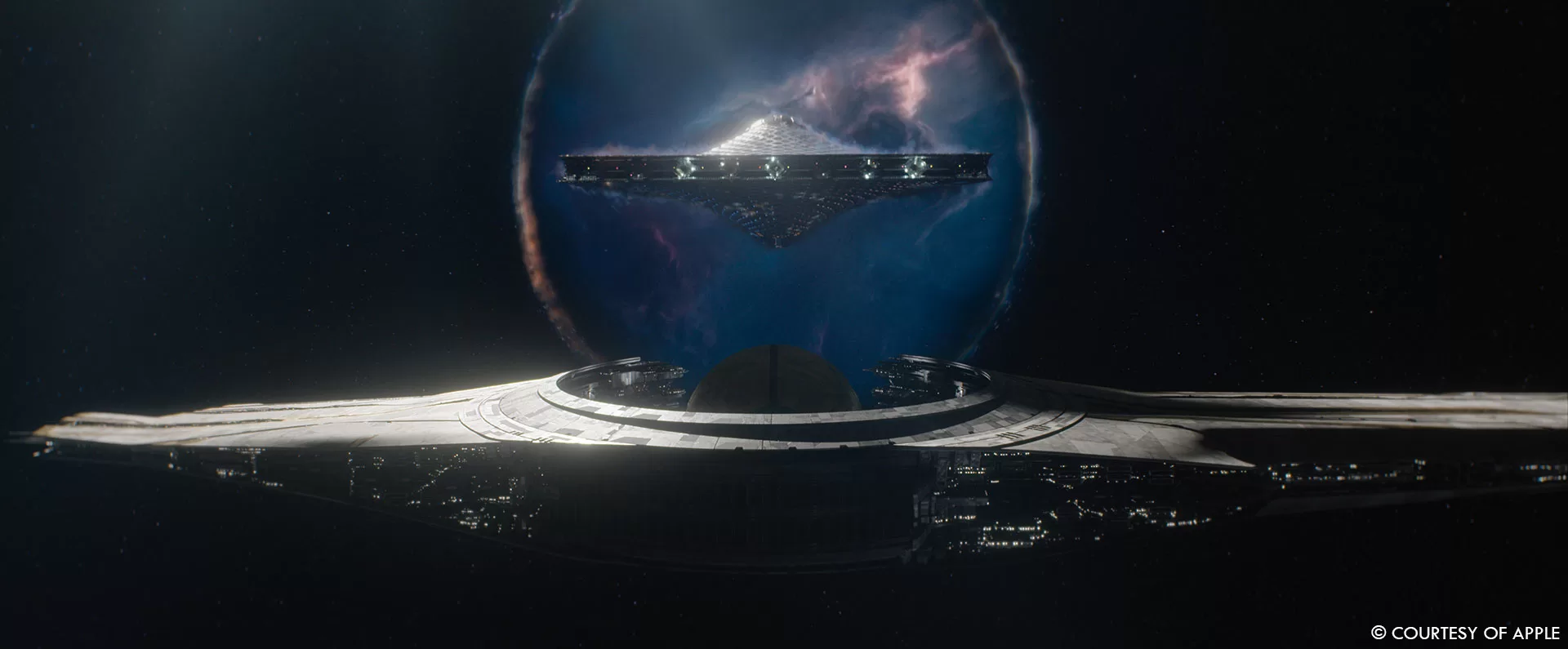
How long have you worked on this show?
I left my house to scout Iceland in March of 2019. It’s been over four years.
What is your next project?
Only Seldon knows.
A big thanks for your time.
WANT TO KNOW MORE?
Cinesite: Dedicated page about Foundation – Season 2 on Cinesite website.
Framestore: Dedicated page about Foundation – Season 2 on Framestore website.
Outpost VFX: Dedicated page about Foundation – Season 2 on Outpost VFX website.
Rodeo FX: Dedicated page about Foundation – Season 2 on Rodeo FX website.
Apple TV+: You can watch Foundation on Apple TV+ now.
© Vincent Frei – The Art of VFX – 2023






